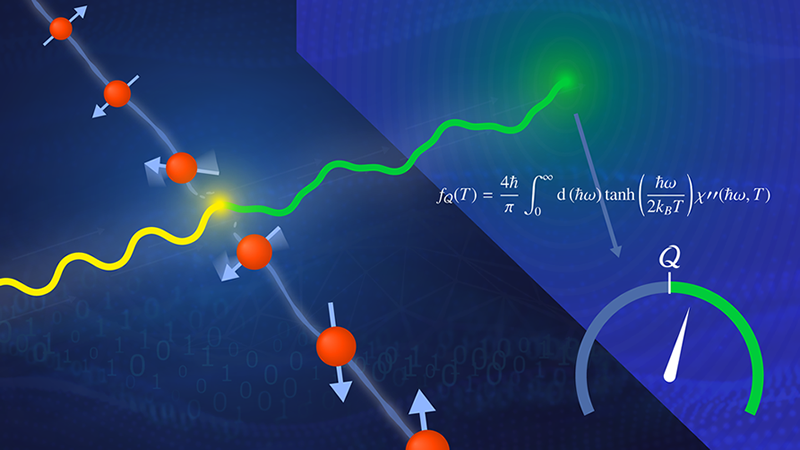November 8, 2021
Quantum entanglement occurs when two particles appear to communicate without a physical connection, a phenomenon Albert Einstein famously called “spooky action at a distance.” Nearly 90 years later, a team led by the U.S. Department of Energy’s Oak Ridge National Laboratory demonstrated the viability of a “quantum entanglement witness” capable of proving the presence of entanglement between magnetic particles, or spins, in a quantum material.

The team – including researchers from ORNL, Helmholtz-Zentrum Berlin, the Technical University of Berlin, Institut Laue-Langevin, Oxford University and Adam Mickiewicz University – tested three entanglement witnesses using a combination of neutron scattering experiments and computational simulations. Entanglement witnesses are techniques that act as data analysis tools to determine which spins cross the threshold between the classical and quantum realms.
First introduced by John Stewart Bell in the 1960s, entanglement witnesses confirmed that the quantum theory questioned by other scientists had been correct. Bell’s technique relied on detecting one pair of particles at a time, but this approach is not useful for studying solid materials composed of trillions and trillions of particles. By targeting and detecting large collections of entangled spins using new entanglement witnesses, the team extended this concept to characterize solid materials and study exotic behavior in superconductors and quantum magnets.
To ensure that the witnesses could be trusted, the team applied all three of them to a material they knew to be entangled because of a previous spin dynamics study. Two of the witnesses, which are based on Bell’s approach, adequately indicated the presence of entanglement in this one-dimensional spin chain – a straight line of adjacent spins that communicate with their neighbors while disregarding other particles – but the third, which is based on quantum information theory, fared exceptionally well at the same task.
“The quantum Fisher information, or QFI, witness showed a close overlap between theory and experiment, which makes it a robust and reliable way to quantify entanglement,” said Allen Scheie, a postdoctoral research associate at ORNL and a lead author of the team’s proof-of-concept paper published in Physical Review B.
Because fluctuations in a material that appear to be quantum in nature can be caused by random thermal motion, which only vanishes at absolute zero on the temperature scale, most modern methods cannot distinguish between these false alarms and actual quantum activity. The team not only confirmed the theoretical prediction that entanglement increases as temperature decreases but also successfully differentiated between classical and quantum activity as part of the most comprehensive QFI demonstration since the technique was proposed in 2016.
“The most interesting materials are full of quantum entanglement, but those are precisely the ones that are the most difficult to calculate,” said ORNL neutron scattering scientist Alan Tennant, who leads a project focused on quantum magnets for the Quantum Science Center, or QSC, a DOE National Quantum Information Science Research Center headquartered at ORNL.
Read more at ornl.gov/news.
Related Publication: Scheie, A. et. al. (2021). Witnessing Entanglement in Quantum Magnets Using Neutron Scattering. Physical Review B, 103, 224434. doi.org/10.1103/PhysRevB.103.224434
